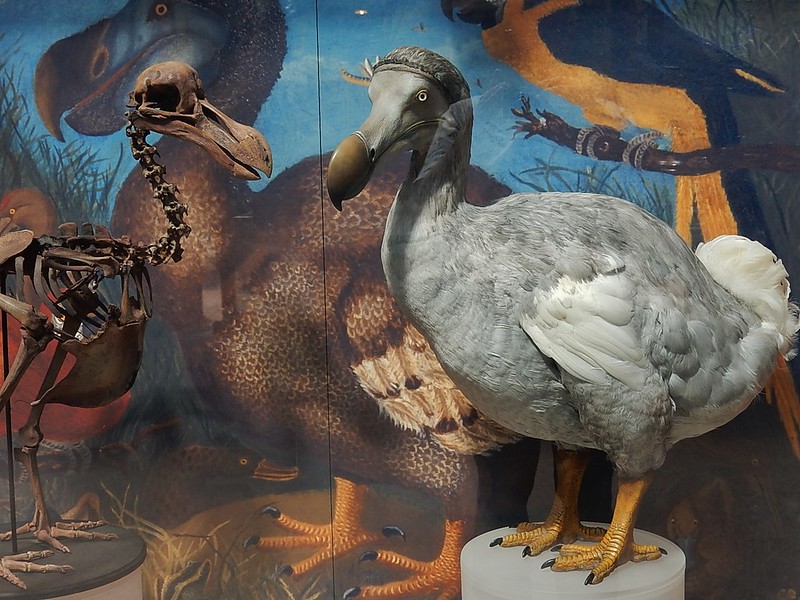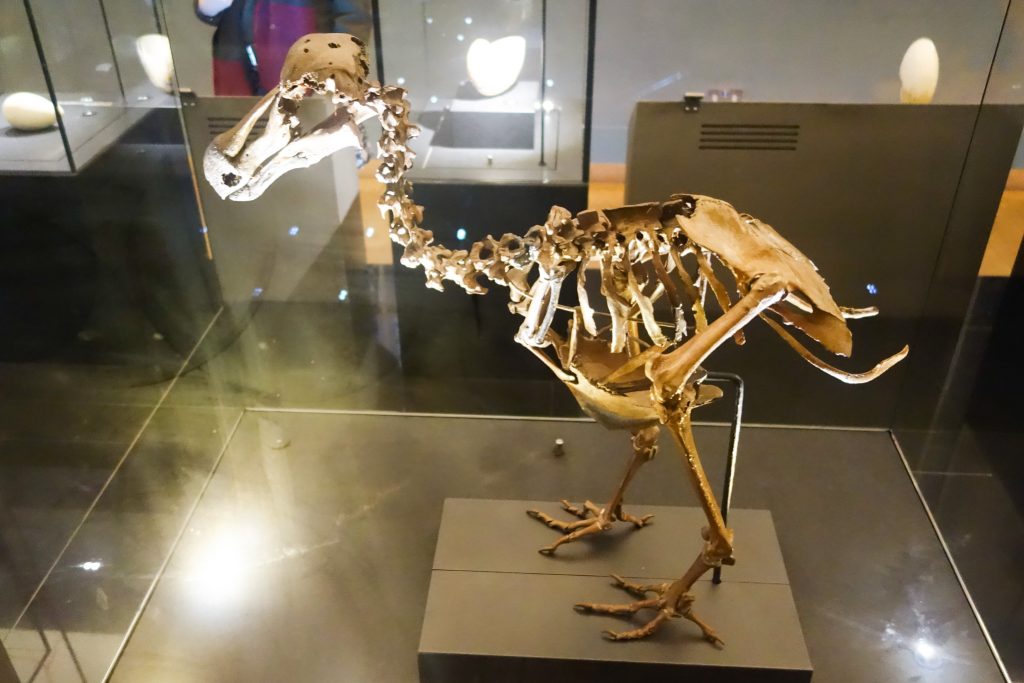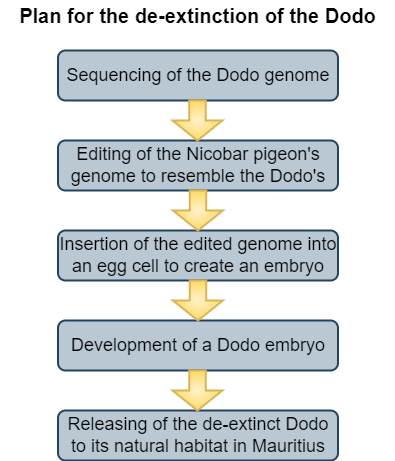The Dodo, a flightless bird that looked like a huge pigeon and lived in Mauritius, has become a symbol of extinction. Although many species have become extinct in the history of life on earth, the Dodo is still often talked about, probably because of the anthropogenic causes of its extinction. Historic descriptions and data collection from fossil records have helped scientists decipher when and where this bird lived and understand more about its anatomy, dietary habits, and reproduction. They have also been able to unravel the mystery behind the rapid decline of its population that eventually resulted in its extinction. However, it’s important to note that the dodo hasn’t been the only animal negatively affected on this island. Research has shown that many other animal and plant species have faced similar problems, putting the island’s biodiversity in danger. For this and other reasons, scientists have thought about bringing the dodo back to life several times in the past. But now, more than ever, with the scientific and technological evolution, a company claims to be really close to making this dream come true.

The Dodo, scientifically known as Raphus cucullatus, belongs to the Columbiformes order. It is believed that its closest living relative is the Nicobar Pigeon, another endangered bird. Dodo was endemic to Mauritius, one of the three Mascarene Islands located in the southwestern Indian Ocean, pretty close to Madagascar. Scientists have combined these data and can now almost safely assume that the Dodos lived in wet and dry forests close to the sea. Their diet consisted of fruits and seeds that fell off palm and pine trees to the ground. Dodos also consumed rocks that helped their digestive system handle the fruits, roots, seeds, and nuts eaten. Researchers believe that as time passed, the bird lost its ability to fly simply because there weren’t any predators on the island that needed to be avoided via flying to the mountaintops. However, as its flying capabilities were gone, the Dodo acquired a heavier and larger body, a longer beak, and shorter legs that enabled it to spend most of its time on the ground looking for the aforementioned food. It is estimated that the average height and weight of a Dodo were 90 cm and 20 kg, respectively. Regarding the bird’s reproductive habits, the female Dodo would lay a single egg annually. And after hatching, the offspring would reach adulthood really fast. A recent study based on bone structure analysis shows that Raphus cucullatus wasn’t particularly sexually dimorphic, meaning that females and males did not present many skeletal differences. Human descriptions of the bird differ as far as the color is concerned. There are references of both grey and black at different body parts, but these could be explained by color changes depending on the stage of molt. Molt began with the replacement of feathers on the wings and tail and then continued to the rest of the body.
Humans first arrived in Mauritius in the late 1500s. From that time point, life changed dramatically for the Dodo. Dutch sailors who traveled to the island used to keep journals about everything they encountered there, and these notes proved to be valuable information for scientists trying to unravel the history of the Dodo. For many years, the existence of the Dodo was controversial. Many thought it was just a myth. But Dutch records helped unravel the truth about this strange bird that used to occupy Mauritius up until human invasion. Of course, people did not come to Mauritius on their own. They brought together animals such as dogs, cats, rats, pigs, and goats that disrupted the island habitats. Historical evidence shows that dodos were hunted down, captured, and eaten by humans, but this was not the main reason that caused their extinction. The introduction of these invasive animal species is thought to have contributed quite negatively to the survival of the dodo since they started to compete. Remember that the dodos relied on seeds and fruits that fell on the ground and could not fly to other regions or mountaintops to find food. As humans and introduced animal species began to occupy more parts of the island, predation and competition resulted in the rapid decline of dodo numbers. This combined with the bird’s slow reproductive rates and its eggs’ vulnerability to predators led to the dodo’s extinction in less than 100 years since human arrival on Mauritius. It is estimated that Dodo’s existence on planet Earth came to an end at around 1690.

To this day remains of dodo bones have been found by researchers. One complete and one partial dodo skeleton have been retrieved by excavations. There have also been attempts to extract DNA from well-preserved fossil material but due to the highly alkaline or very hot conditions of the surroundings, DNA amplification has not been successful so far. Illustrations of the Dodo made by Dutch sailors have also been preserved. Additionally, remains of dodo bodies that were transferred from Mauritius to Europe by those travelers can still be found in museums. Such examples are a mummified head and bone parts of the foot.

Unfortunately, the dodo was not the only victim of the invasive species that came along with humans on the island of Mauritius. More animal species have already become extinct in the last centuries (e.g. the giant tortoises) or are still endangered. Moreover, many plant species that used to count on specific animals, such as the dodo, to disperse their seeds for reproduction now face extinction as well. Therefore, Mauritius biodiversity is threatened, unless something is done to slow down the extinction processes and protect the remaining species of the island. One solution that scientists have suggested to address this problem has been the de-extinction of the dodo and its re-introduction to its natural habitat in Mauritius.

Colossal Biosciences, a company that has tried to bring animals, such as the mammoth and the Tasmanian tiger, back from extinction, has now also turned its interest to the Dodo. In theory, in order to bring back an extinct animal, scientists need to find a preserved cell that contains the entirety of its genome and then use it for cloning. However, this has not been the case for the dodo since, as was mentioned before, the efforts of analyzing its DNA have not been very successful so far. This has led scientists to follow a different route, which is the utilization of the genome of a close relative of the extinct species. Indeed, mitochondrial DNA analysis of the extinct bird recently revealed that its closest living relative is the Nicobar pigeon. So, scientists can use this pigeon’s DNA, edit it with genetic engineering techniques so that it resembles the dodo genome, and then insert it in an egg cell for the dodo’s development. Of course, this is not an easy case. It requires careful handling and the collaboration of various teams from the fields of embryology, genetics, and stem cell biology, among others. Additional problems that need to be addressed are the choice of a suitable egg cell from a donor bird, the recreation of the dodo’s behavior after its birth, and its introduction to an ecosystem (the Mauritius island) that is now a lot different than it used to be when the Dodo was thriving. Therefore, it seems that various obstacles need to be overcome before we can talk about the de-extinction of this iconic bird. However, with the current and future technological advancements, this dream could soon become a reality.
Sources:
https://www.scientificamerican.com/article/tech-company-invests-150m-to-bring-back-the-dodo/
https://www.ncbi.nlm.nih.gov/pmc/articles/PMC5570941/pdf/41598_2017_Article_8536.pdf
https://www.researchgate.net/publication/263752568_The_Dodo_From_extinction_to_the_fossil_record
